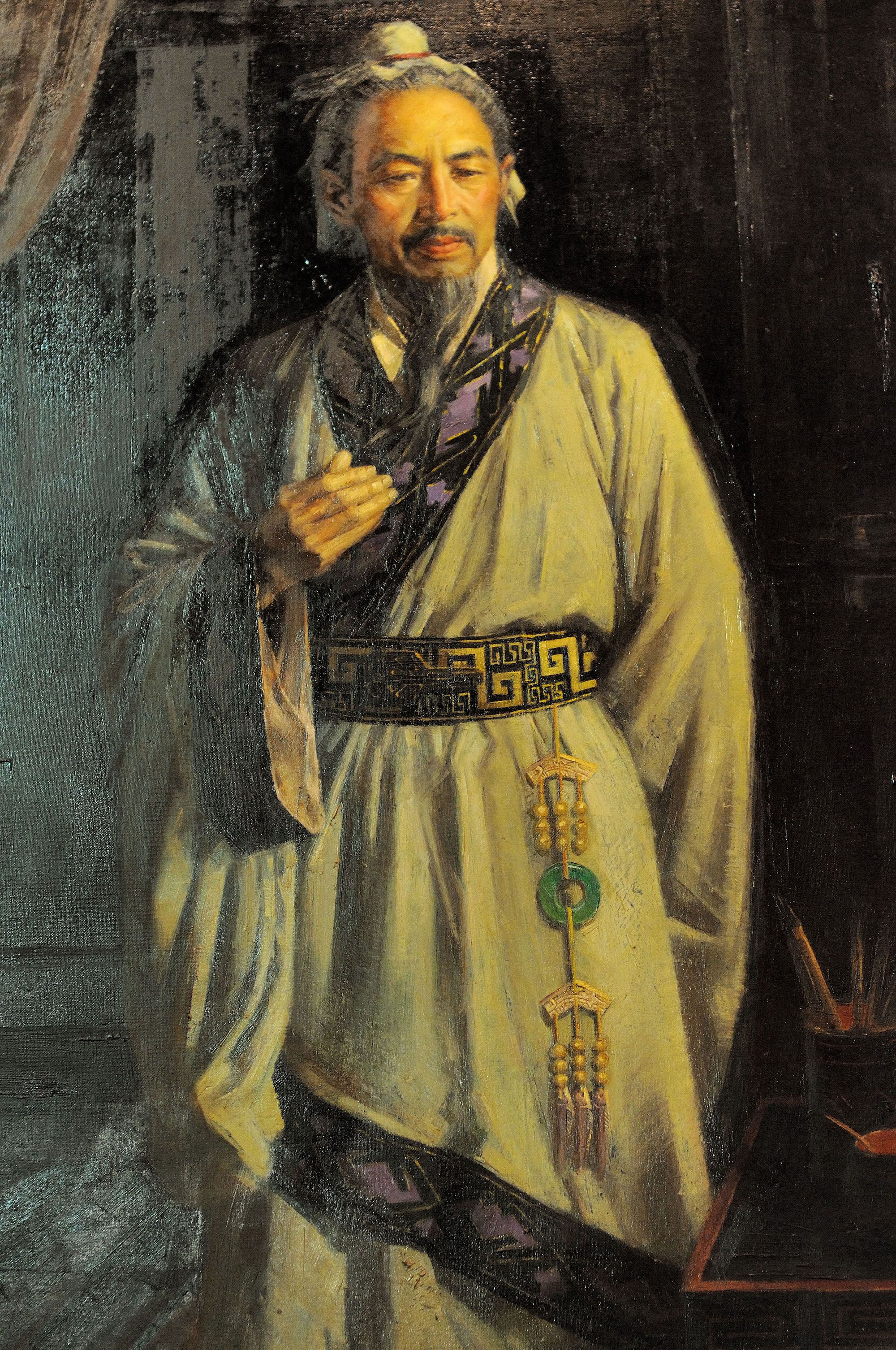The Art of War Was a Book on Military Strategy Written by
The Art of War
The Art of War
The Art of War is an influential document about tactical warfare written by the aboriginal Chinese military strategist Sunzi.
Subjects
Anthropology, Social Studies, Ancient Civilizations, World History, Storytelling
Paradigm
Sunzi
Sunzi was a Chinese full general and about famously the author of The Art of War,one of the get-go documents on military strategies. Although Sunzi wrote this certificate thousands of years ago, it continued to influence many world leaders within the past century.
Photograph by Charistoone-Images / Alamy Stock Photo

The Fine art of War, an influential document written by the ancient Chinese armed forces strategist Sunzi (as well known as Sunday-Tzu), is one of the starting time known treatise on warfare strategy in history. Known in Chinese every bit Bingfa, this guide features information about various battle maneuvers and tactics, as well as strategic advice on collecting information about the enemy'southward location and battlefield terrain before attacking. It is hard to know exactly when The Fine art of War was written, merely virtually scholars call back it was written between 475 and 221 B.C.E., during the Warring States menstruation. Scholars also cannot exist sure well-nigh the details of the life of its author, Sunzi, simply they believe he was a general working for the Wu land. It is articulate that whatever Sunzi'south life experiences were, he had a great deal of noesis most warfare and tactical grooming. The premise of The Art of War is that war should be avoided with affairs. If it cannot exist avoided, information technology should be fought strategically and psychologically to minimize damage and the wasting of resources. Warfare should just be a concluding resort and heading into boxing is already albeit a kind of defeat. Sunzi's strategy in dealing with foes was a combination of peaceful resolutions and aggressive warfare. This mirrors the Taoist principals of yin and yang (or opposing but complementary forces). Sunzi recommended that every leader follow the Tao (or the natural order of the universe) as a main component of successful leadership. The Art of War has many specific battle strategies and advisements. It stresses grooming for battle above all, including planning around climate and boxing terrain, studying the enemy's movements and weaknesses, and proper preparation of soldiers. At the same time, it too recommends being flexible, because the battleground is then unpredictable. It discourages generals from engaging in siege warfare, considering it extends the disharmonize and wastes resources. And generals should treat captured troops and defeated soldiers respectfully. The Art of State of war has remained relevant over the years considering it is near strategy and tactics rather than specific warfare technology. It has influenced leaders all over the earth, not only in warfare only in many areas of life, including business. Modern leaders such equally the erstwhile chairman of the Chinese Communist political party and one of the founders of the People's Republic of China, Mao Zedong, cited The Art of War as part of their military success.

Sunzi was a Chinese general and nearly famously the writer of The Art of State of war,one of the first documents on military strategies. Although Sunzi wrote this document thousands of years ago, it continued to influence many globe leaders within the past century.
Photograph by Charistoone-Images / Alamy Stock Photo
boxing tactic
Noun
art and science of organizing a armed services campaign, including troop motility, weaponry, and strategy.
siege
Noun
organized attack on a fortified or protected structure.
strategy
Noun
program or method of achieving a goal.
Taoism
Substantive
Chinese philosophy and religion emphasizing noninterference with the grade of natural events.
warfare
Substantive
armed conflict between two or more groups of people, usually representing different nations or other political organizations.
yang
Noun
active, male person half of yin and hang; represents heat, calorie-free, and dryness
yin
Noun
passive, female half of yin and yang; represents cold, dark, and wetness
yin and yang
Noun
inseparable and contradictory elements; a concept found in Taoism
Source: https://www.nationalgeographic.org/encyclopedia/art-war/
0 Response to "The Art of War Was a Book on Military Strategy Written by"
ارسال یک نظر